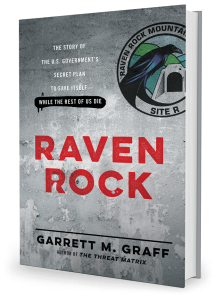Below is the text of my monthly “Editor’s Letter” in the new issue of Washingtonian.
—-
Washington is generally considered a one-industry town. The government spending that has delivered so many jobs and so much wealth, particularly in the last decade, is the economy’s major focus, but truth be told, Washington has always been a two-industry town: government and real estate. And to be entirely accurate, real-estate speculation started here even before the first federal worker arrived.
At Suter’s Tavern in Georgetown in 1791, George Washington brokered the city’s first real-estate deal—and made the area’s first fortunes for those lucky developers. The government wanted 100 square miles for the Federal City, most of which was then tidal marshes and plantation land.
George Washington’s deal was that the land would be divided into lots and sold half by the government and half by the original landowners. Those initial lots went at auction for a 1,000-percent markup—not bad for the city’s first speculators.
It didn’t even take until the end of that year before the new city’s first scandal unfolded—and it, too, involved real estate. One of the District’s three appointed federal commissioners, Daniel Carroll, had built his family’s house smack in the middle of where planner Pierre L’Enfant wanted to put New Jersey Avenue. L’Enfant refused to compromise on his plan, so without asking anyone, he had the Carroll house torn down one night.
The ensuing row dragged in both George Washington and Thomas Jefferson, who had been overseeing the development of the new capital. By February 1792, Jefferson had fired L’Enfant, writing, “Your services must be at an end.”
L’Enfant’s vision, though, continued to shape DC in the centuries ahead—and we’ve never lost our fascination with development. Writing in the 1960s, journalist Stewart Alsop said, “After sex and politics, real estate is still one of the city’s three main subjects of conversation.”
Today there’s lots to talk about. This month’s cover package shows how, after years of hibernation, the real-estate market is coming back to life. I’ve watched this story unfold since moving to Washington three months before the Verizon Center’s December 1997 opening. That project began a transformation of the District’s downtown that continues today with the still-rising development of CityCenterDC on the site of the old convention center—ten acres with 216 condos, 458 apartments, and more than 800,000 square feet of retail, restaurants, and office space. DC today is adding about 1,000 new residents a month.
Similarly, the response to September 11, homeland security, and the two wars that followed launched a huge government spending boom that has reshaped the suburbs, brought hundreds of thousands of new jobs to the region, and clogged Virginia and Maryland roads.
The results of nearly two decades of growth are clear in our cover story: Neighborhoods such as Shaw, Trinidad, and Logan Circle in DC, which when I came to town were no-go zones, are now red-hot, hopping with young families (page 98). Formerly quiet, leafy suburbs like Rockville are reinventing themselves as urban centers. Thirty-seven local Zip codes last year had a median sale price of more than half a million dollars (page 95).
According to the experts senior writer Luke Mullins interviewed, it seems likely that not even the looming sequestration battle will derail the real-estate rebound. Bidding wars are back and, as agent Diana Hart told Mullins, “I have not written an offer in the last month that did not contain an escalation clause.”
After two centuries of focus on the District proper, Mullins argues in his article that Washington will change in the years ahead: “The Washington area will feel less like one large city feeding a network of suburbs and more like a series of smaller cities dispersed throughout the region.”
It’s a region that Stewart Alsop, who died in 1974, could hardly have imagined, especially writing before the 1968 riots began to empty DC’s population, but our dinner-table conversations today—whose house is selling and where to buy now—are topics he’d easily recognize.



Recent Comments